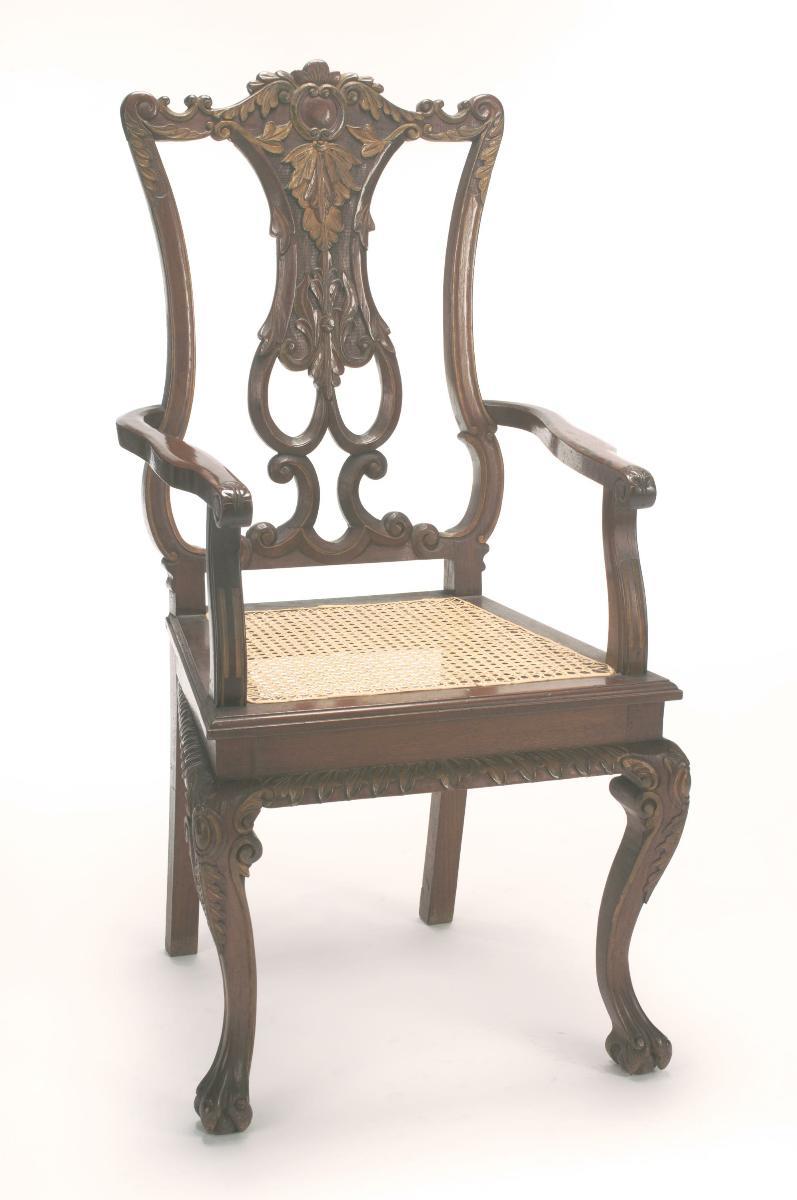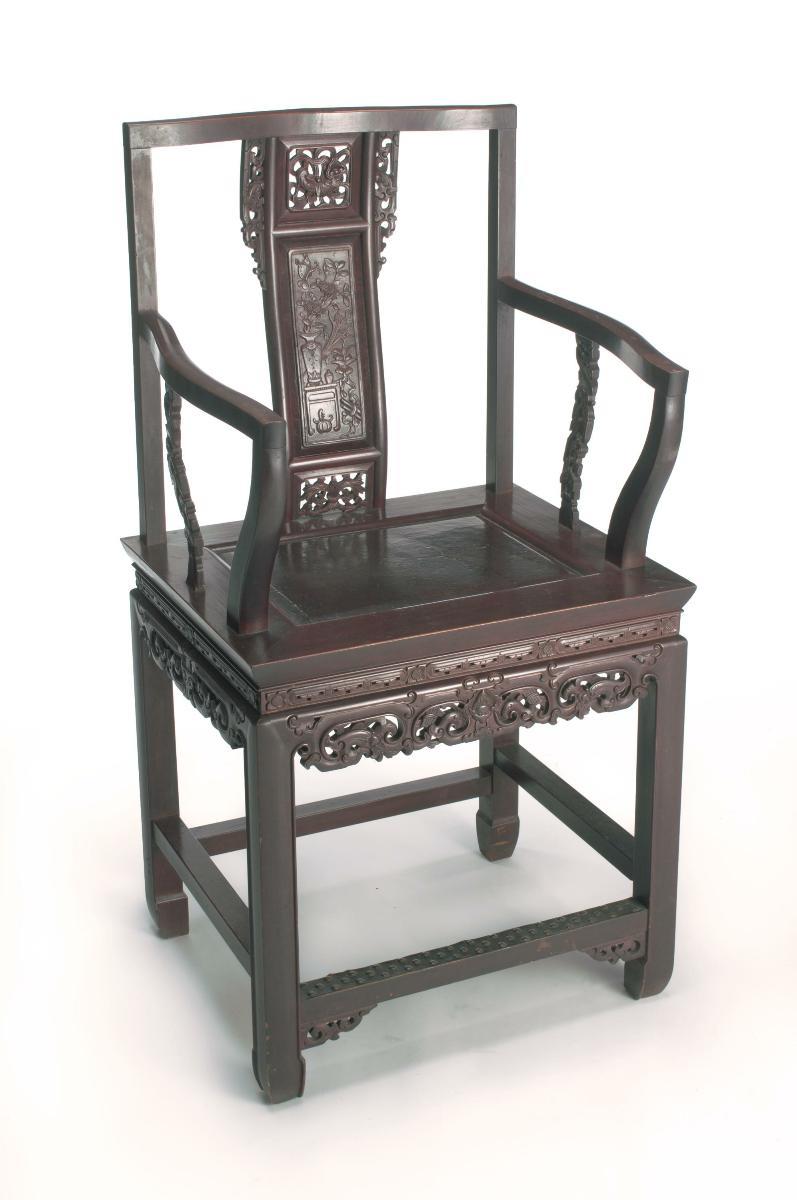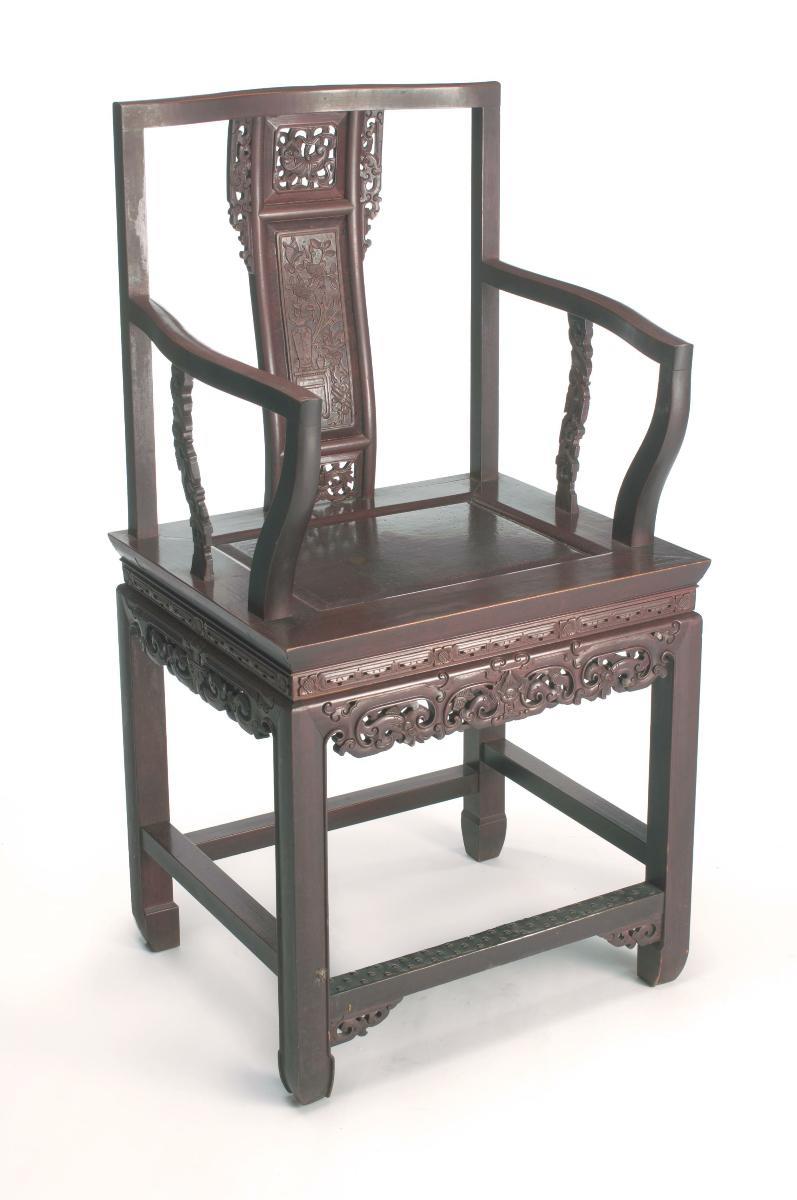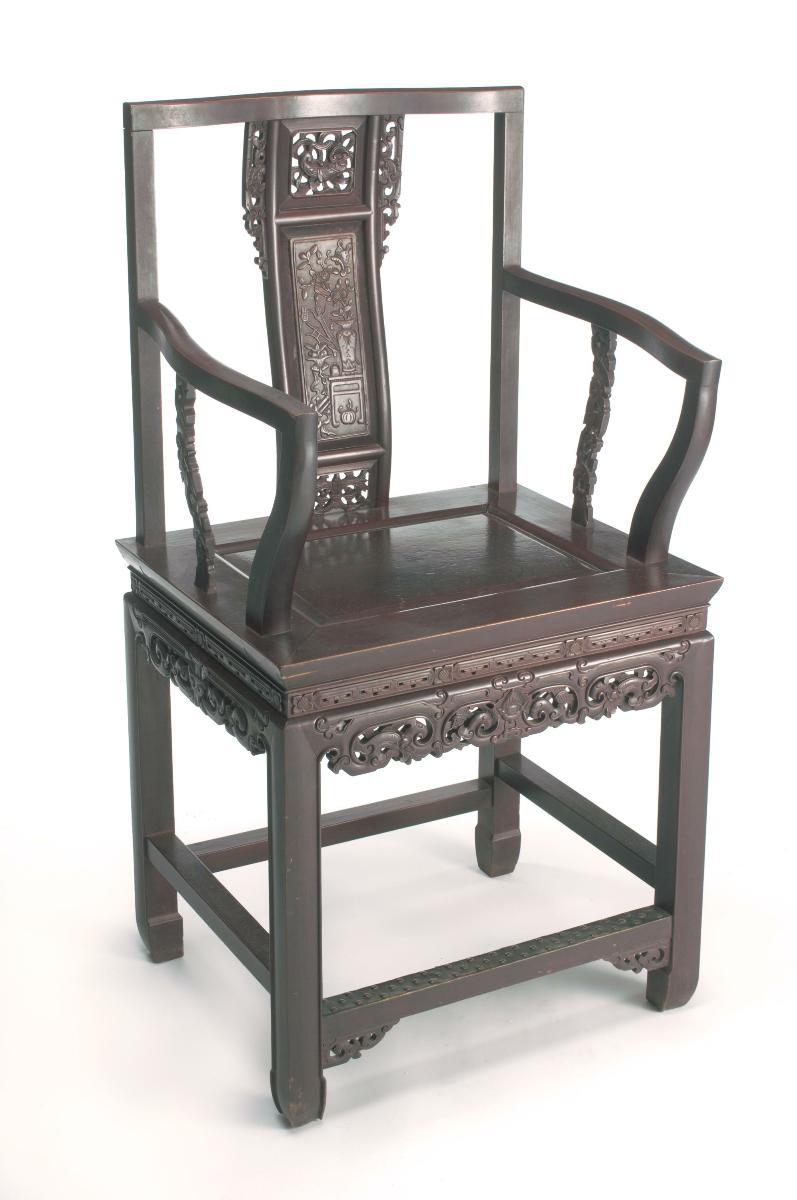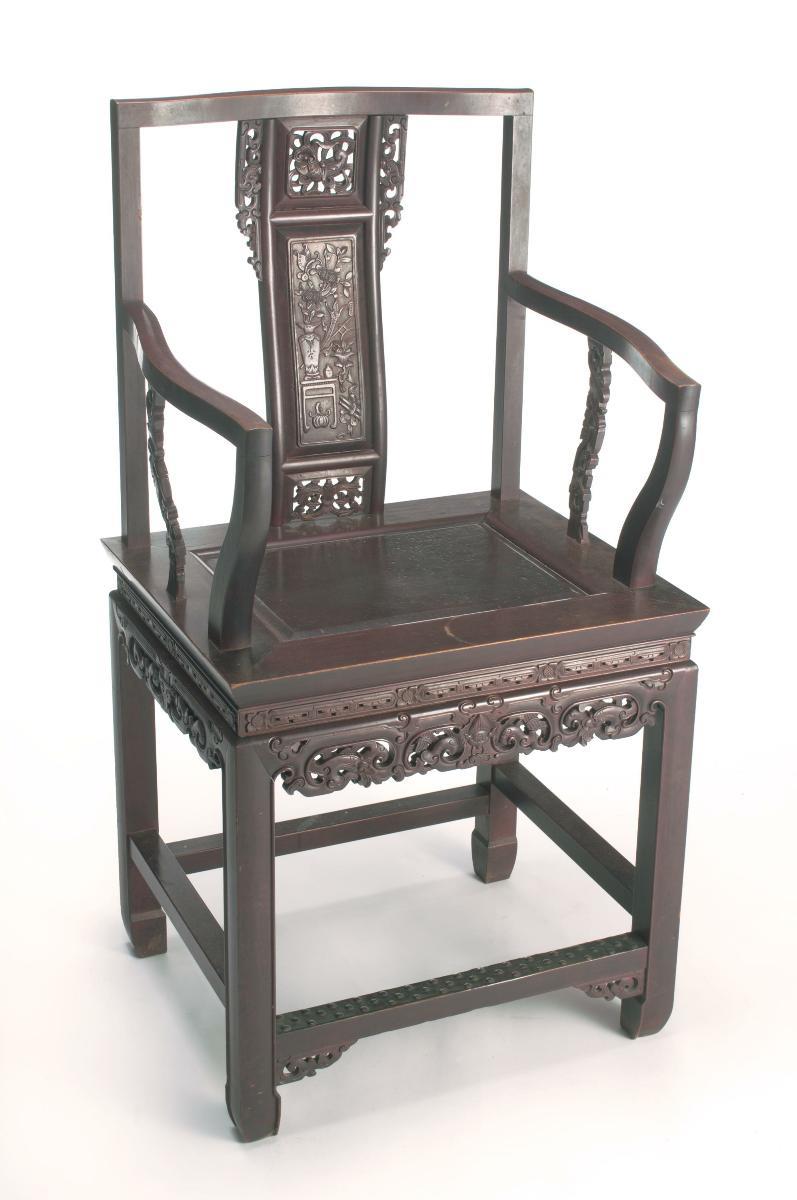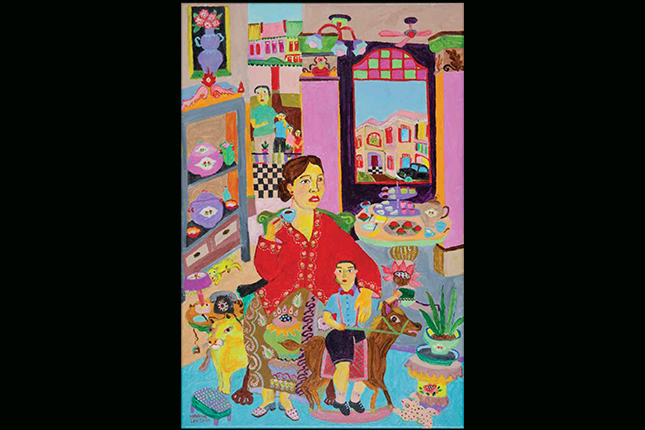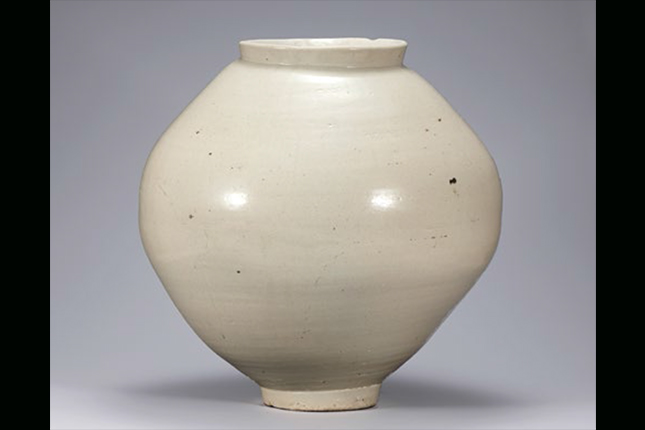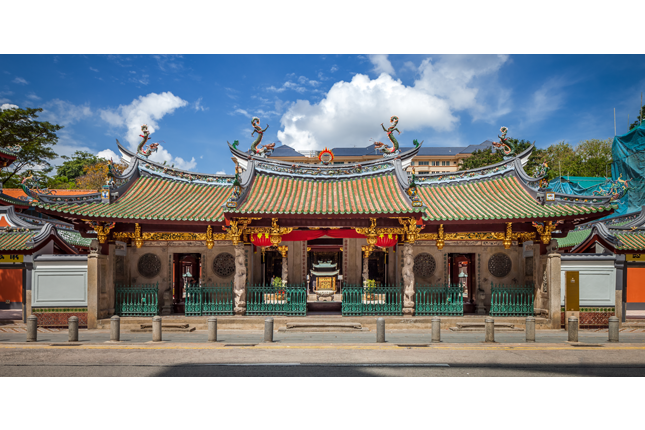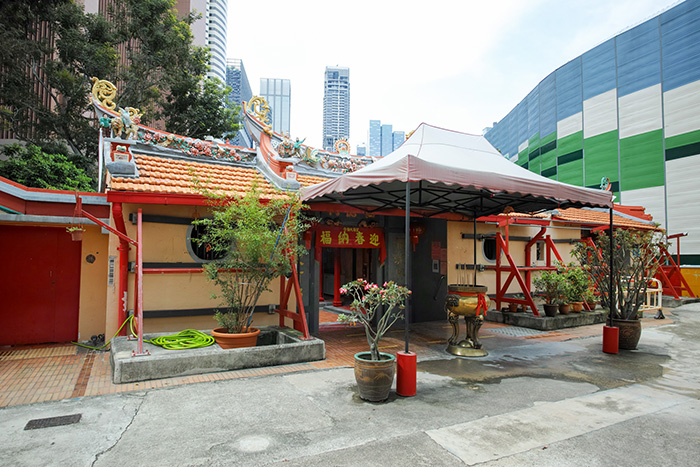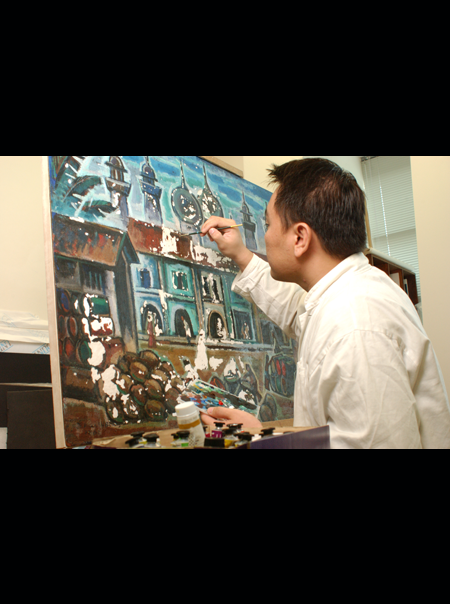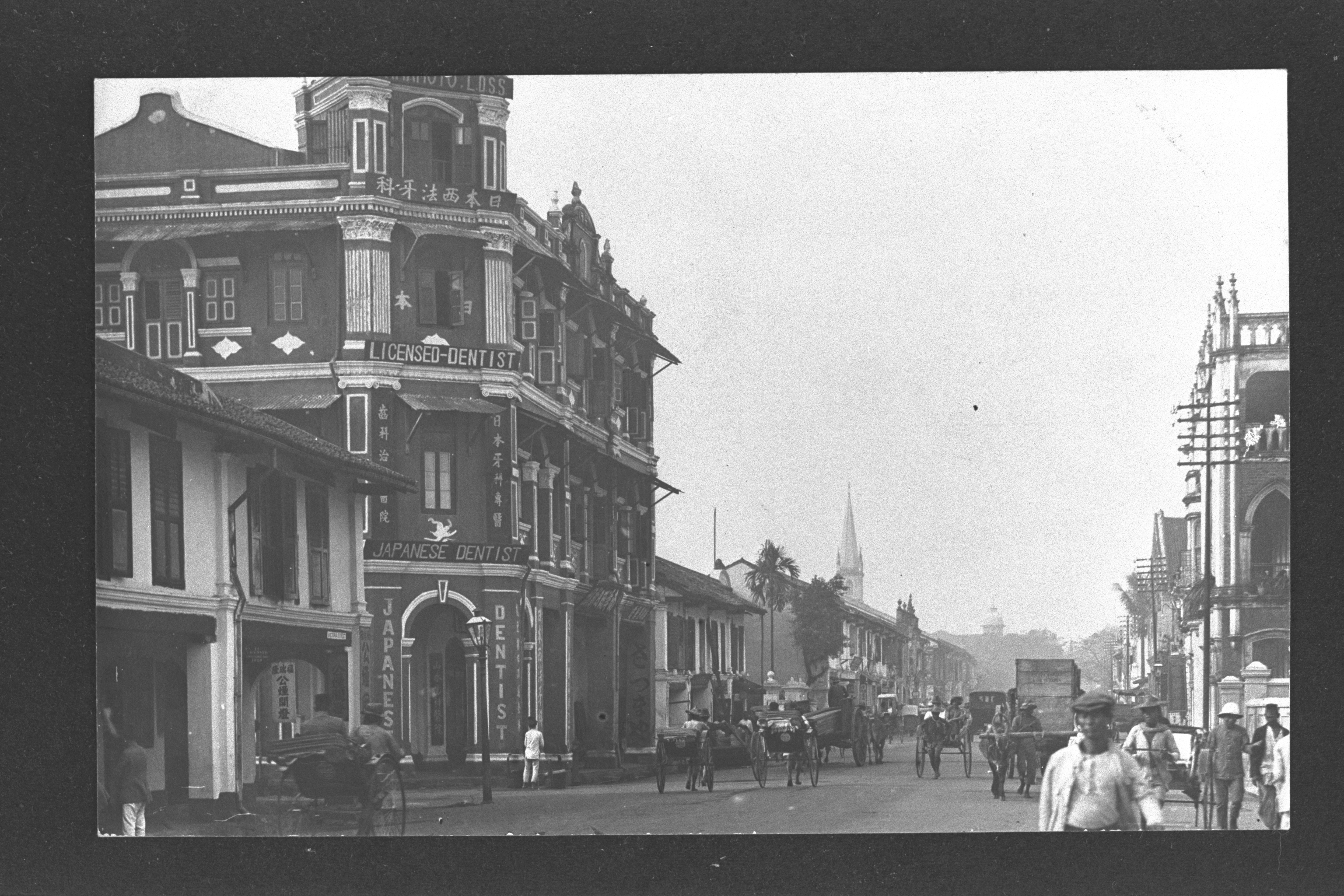While brown-and-gold chairs, including the ones in this set, are English in structure and showcase English design influences of the 17th-19th centuries, they showcase much Chinese and indigenous influences as well. The furniture features gilding, which English chairs of this type in general, do not feature. This preference for gilding is believed to parallel the Peranakan Chinese’ love for excessive gilding of their namwood furniture. These chairs take after the Chippendale style in terms of their pierced splat backs, scrolling foliage and cabriole legs. However, unlike the Chippendale chairs, they have cane seats (useful for humid tropical weather) instead of upholstered seats. Most Chippendale chairs do not have armrests but Peranakan versions of such chairs usually do, as they were meant mainly as hallway furniture rather than as dining furniture. The use of teak also suggests that the furniture was made in Southeast Asia where teak was abundant. It was also light and thus was a common material for furniture. In comparison, the English made chairs would have used temperate woods such as mahogany.




